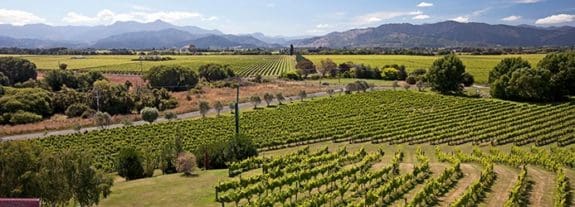Welcome to the Autumn edition of Rural eSpeaking. We hope you find the articles both interesting and useful.
If you would like to talk further about any of the topics we have covered in this edition, or indeed on any other legal matter, please don’t hesitate to contact us. Our details are on the right.
Rural leases

Should be more specific
Leasing of farms, orchards and cropping land is becoming more common. It is a good way for farming operations to expand without capital commitments involved in buying land. For landowners, it can be a useful way to retain ownership of the capital but give away the day-to-day farming operations, either through a desire to semi-retire or to hold the farming asset for a period while family or continued ownership issues are resolved.
In the past, some rural leases have been less formal than, for example, leases of commercial buildings, particularly in the cropping area. These days, however, due to compliance issues there is a need to consider the terms of these leases much more carefully than in the past. Three issues in particular are:
- Resource management/environmental
- Biosecurity, and
- Health and safety.
Until recently, most leases (and this is in common with leases of commercial buildings) contained a clause simply requiring the lessee to comply with all relevant statutory or regulatory requirements, sometimes enumerating the various acts and regulations in a non-exhaustive list.
Today, those general clauses are no longer good enough and leases should be much more specific in the compliance obligations of each party.
Resource management/environmental
The advent of the farm environmental plan (FEMP) regime has substantially increased compliance obligations in respect of resource management issues.
All local authorities must now implement a farm environmental management plan regime. Generally speaking, it is the landowner who has the responsibility to prepare these plans; but obviously with the lessee being the farmer and in day-to-day control of the land, it is the lessee who needs to comply. Accordingly, there needs to be clear provision in the lease as to whose responsibility it is to prepare that plan, who is required to comply with the plan, who bears the costs of compliance and also where the costs of any failure to comply with the plan lie. The lease should also contain a warranty from the lessee to comply with the FEMP including monitoring and reporting obligations.
Biosecurity
The Mycoplasma bovis outbreak brought into sharp focus the need to comply with biosecurity rules. Rather than having a lease containing just a general obligation to comply with biosecurity legislation, a lease — particularly of farms that might be specifically affected by biosecurity issues such as dairy farms, orchards and cropping farms (with the issue of pests imported from overseas) — should be clear about the lessee’s obligations to comply with specific statutory provisions and regulations such as, for example, NAIT.
Health and safety
Once again the compliance regime for health and safety is significantly more onerous than in years past. Health and safety clauses in leases must be significantly more specific than a mere obligation to comply with health and safety legislation.
The lessor, for their part, would need their own health and safety manual as well as the ability to see and approve their lessee’s health and safety plan.
The lease should also confirm that the lessee is the ‘PCBU’ on the land for the purposes of the Health and Safety At Work Act 2015, and to have a warranty from the lessee that they have a health and safety management system applicable to the type of work to be carried out on the land.
Other provisions may need to be altered
Some of the other provisions of leases may need to be modified to cope with these more onerous compliance issues.
The essence of a lease is that a lessee has ‘exclusive possession’ and ‘quiet enjoyment.’ In a nutshell, this means that the lessor cannot enter onto the leased property except in certain circumstances and cannot do anything that derogates from the lessee’s right to use and occupy the land exclusively for the term of the lease.
There are limited exceptions to these rules — the usual one being that if the lessee fails in their repair or maintenance obligations then most leases will provide that the lessor can enter onto the property, on notice, to remedy the lessee’s default.
It would be appropriate now for leases to contain specific provision for lessors to have access to the property where the lessee is not complying with some of the statutory or regulatory requirements of resource management, biosecurity, and health and safety legislation coupled with the ability of the lessor to remedy areas of non-compliance at the lessee’s cost.
In addition, it may be that a lessor would also require the right for access for monitoring purposes and also to receive technical data and reports from a lessee or to require periodic formal reporting meetings.
Some leases will provide a list of matters that the lessor and the lessee agree are ‘essential terms’ of the lease. It would seem appropriate for some of these breaches of specific regulatory requirements to be included in this list due to the potential significant adverse consequences of the lessee failing to comply with their obligations in relation to these matters. A breach of an essential term gives a party greater rights if it wishes to terminate the lease for breach.
For the above reasons, if you are entering into a rural lease, it is more important than ever to talk with us before signing on the dotted line.
Trusts

Still fit for purpose for farm ownership and succession?
Trusts have long been the preferred vehicle for farm ownership.
Historically, holding a property through a trust meant that ownership did not change on the death of the farmer and, therefore, any death duties could be avoided during the generational change.
There were also significant advantages in being able to allocate income amongst a group of beneficiaries according to their personal tax rates; this was particularly popular during the 1970s and 1980s when there were high marginal tax rates.
Both death duties and the very high marginal tax rates were abolished in the mid-1980s; it is now nearly 40 years since these reasons for holding farm assets in a trust have disappeared.
Still a good way to own your farm?
The new Trusts Act 2019, replacing the Trustee Act 1956, came into effect on 30 January this year. So now would seem an opportune time to review whether your trust is still a suitable vehicle for farm ownership.
One of the reasons that trusts were so effective in the tax field was a ‘blurring’ of ownership. While the trustees held the strict legal ownership of property, they held it on behalf of a group of discretionary beneficiaries who, at any time, could benefit from the trust property but until such time as a decision to allocate trust income or capital had been made in their favour they had no right to, or interest in, the trust property.
This worked very well for tax situations but, when we look at succession issues, having a trust owning your farm can prove to be a double-edged sword.
If you own property in your own right, while you are alive and have full mental capacity you can do what you like with it; your decisions cannot be challenged by aggrieved family members who might feel unfairly treated.
If you are a trustee of a trust, notwithstanding the words in trust deeds that would appear to give you the widest possible ‘discretion’ to deal with trust property between beneficiaries, in reality the combination of the requirements in the new trusts legislation and court decisions over the years do put limits on trustees. The Kain1 and Erceg2 cases are stark examples of beneficiaries taking trustees to court over their decision-making.
Due to the increased ability for beneficiaries to obtain information from trustees as a result of the Erceg decision (much of which is now in the Trusts Act), trustees’ actions are now likely to come under even more scrutiny from beneficiaries.
Some (usually older) trust deeds have wide definitions of who is a beneficiary – including, in some cases, ‘former spouses’ or ‘step-children’. This can cause obvious issues, given that the trustees’ basic obligation, when making a decision, is to consider the interests of all the trust’s beneficiaries. All beneficiaries have a right to be advised that they are beneficiaries of a trust and that they have a right to receive ‘trust information’.
Pros and cons
In the light of the new legislation and recent case law, it may now be time to consider whether the disadvantages of having a trust outweigh the advantages.
Advantages:
- No need to alter the legal ownership on inter-generational change to the person actually farming the property
- Ability to allocate income to a wider group, at their marginal tax rates, than those actually farming, and
- Protection of assets in the event of personal liability of individuals.
Disadvantages:
- Legal accountability of trustees to beneficiaries for their decision-making, with potential personal liability if the trustees get it wrong
- Personal liability of individual trustees relating to, for example, breaches of the Health and Safety at Work Act 2015 and/or the Resource Management Act 1991, and
- Potential requirement to disclose what might be regarded as private information to a wider group than intended, such as, estranged spouses and step-children.
Trusts are difficult legal entities for many people to understand and, in many cases, they are administered with little real understanding of their underlying concepts. If you are considering establishing a trust to own your rural property or are reviewing your current trust, do consult with us and make sure you consider potential alternate structures.
1 Kain v Hutton [2008] 3 NZLR 589.
2 Erceg v Erceg [2017] 1 NZLR 320. [2017] NZSC 28.
Over the fence
Privacy Act 2020: affects on rural sector too
The Privacy Act 2020 came into force on 1 December 2020, replacing the Privacy Act 1993. It has introduced new requirements for New Zealand businesses (including farms) and organisations to give greater protections for individuals.
If a business or organisation has a privacy breach that has caused serious harm to someone or could do so, then it must notify the Office of the Privacy Commissioner.
The onus is on the business or organisation, not individual employees.
There are 13 information privacy principles including collecting only the information you need, advising people what you are doing, storing information securely and giving people access to their personal information. There is more on these 13 principles here.
If you are an employer, it would be prudent to review your employment agreements to check whether there is a confidentiality clause that creates the obligation on both you and your employees both during the employment period and following.
We recommend that you be proactive, consider the information you hold and how you can store employment-related records safely. If you haven’t done so already, you should develop a privacy statement for your employees and contractors, and encourage everyone to engage to consider their actions.
New residential tenancy laws: implications for farm accommodation
The Residential Tenancies Amendment Act 2020 has made further changes affecting landlords and tenants, including farm accommodation provided as part of a person’s employment. The most recent changes took effect on 11 February 2021.
Landlords must provide a written tenancy agreement. If you’re providing accommodation as part of an employment package, you should ensure that employment agreements include the latest tenancy requirements in addition to the Healthy Home Standards.
When your employee’s employment comes to an end, you must give notice that the tenancy also comes to an end and you should detail the requirement to leave the property.
To find out more about the new legislation and how it may affect you, go here.
National Environmental Standards for Freshwater Regulations 2020: impacts on winter grazing
The National Environmental Standards for Freshwater Regulations 2020 came into force on 3 September 2020.
The standards are designed to protect existing inland and coastal wetlands, improve poor practice intensive winter grazing of forage crops, restrict further agricultural intensification and limit the discharge of synthetic nitrogen fertiliser to land and require reporting of fertiliser use.
The intensive winter grazing rules apply to any grazing crop in situ other than pasture for the period between 1 May and 30 September.
A resource consent is not required if the farm has previously been used for intensive winter grazing between 2014 and 2019 and you are not seeking to expand the area. If the criteria cannot be met, a resource consent will be needed.
The rules on intensive winter grazing and cropping were to have taken effect on 1 May 2021, but have been delayed until 1 May 2022. The exception is the requirement to obtain a resource consent for an expansion of the area which took effect on 1 May 2021.
The regulations include the exclusion of pigs, dairy cattle, dairy support, deer and beef cattle from waterways. This exclusion means at least a setback of 3 metres from any body of water being a lake, river or natural wetland; there are some exceptions for smaller bodies of water. Effective fences must be put in place to ensure stock cannot enter into the waterways.
From 1 July 2021, a resource consent will be required if more than 190kg of synthetic nitrogen fertiliser is applied per hectare. This is an average across the whole area in pastoral land use and a limit of no more than 190kg on any one hectare. This applies regardless of the livestock that are grazing. The nitrogen limit does not apply to land in arable use.
Regional councils are putting in additional rules and setting timeframes.
Please don’t hesitate to contact us if you would like some guidance about the requirements and compliance with the regulations.
DISCLAIMER: All the information published in Rural eSpeaking is true and accurate to the best of the authors’ knowledge. It should not be a substitute for legal advice. No liability is assumed by the authors or publisher for losses suffered by any person or organisation relying directly or indirectly on this newsletter. Views expressed are those of individual authors, and do not necessarily reflect the view of this firm. Articles appearing in Rural eSpeaking may be reproduced with prior approval from the editor and credit given to the source.
© NZ LAW Limited, 2021.
Editor: Adrienne Olsen. Adroite Communications. M 029 286 3650

